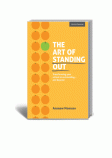During the past few months I’ve been writing a book. It has been the most cathartic, scary and all-consuming experience of my life. I’ve cherished and savoured every minute of it. When I finally submitted the manuscript, I did so with great reluctance, as if I was cutting loose one of my own children. I felt compelled to add a note to the editor: ‘Take good care of her…’
What follows is an extract from the introduction:
I love what I do. I’ve had the privilege of working with so many talented people, whose dedication and zest for teaching always continue to amaze me. I feel incredibly proud to be a headteacher. Even now, when people ask me what I do, I love seeing their reaction when I tell them. It always strikes a chord with people. I sometimes half expect them to give me a hug, as if to thank me for singlehandedly trying to save the world. Do you ever feel like this, or is it just me?
When I was in sixth form, I remember going to a careers event and being told that the key to a successful life was to find something you enjoy doing and then getting someone to pay you to do it. Even better, if it’s something you are good at and it’s something the world needs. This then becomes your purpose in life. I’ve since learnt that it’s what’s known as having a firm persuasion in your work, and is – according to the poet and author David Whyte – one of our greatest and missed opportunities: “To feel that what we do is right for ourselves and good for the world at the exact same time.” It is, he says, “one of the great triumphs of human existence.” It’s what allows us to move mountains.
I sometimes feel that I can move mountains. I’ve also had to climb my fair share as well, as I faced challenge after challenge after challenge. But overall, I have a very firm persuasion. We all know what’s great about being a teacher, and many other books have done a far better job at describing this than I ever could. I always remember asking an experienced teacher at interview, “What is the best thing about being a teacher?” Her reply was immediate: “August”. She got the job.
Here’s what I like best about being a headteacher:
- Transforming the life chances of those pupils and their families who put their trust in you;
- Helping people to become the best they can be;
- Telling everyone and anyone how proud you are of your school, whether they want to listen to you or not;
- Quoting Walt Disney to your Year 6 leavers on the final day of term, telling them that, ‘if you can dream it, you can do it. Now go out and change the world.’;
- Sleeping soundly at night because you know that they will. The world is in safe hands and in some small way you played a part in it.
But as much as I love my job, there are bits I really don’t enjoy anymore. More than anything, I’ve had enough of being judged on how well I jump to other people’s tunes. The relentless pressure, for example, to become ‘good’ or ‘outstanding’, to come top of the league tables, to be in the top 10% of this or the top 1% of that. And all based on somebodies tune. It’s about time I started to jump to my own again.
I’ve now come to the point where I’ve realised I can’t see out the rest of my career continually trying to incrementally improve test scores; to eke out a percentage point here and a percentage there. Marginal gains are all well and good, but not in the context of test scores. I find the thought of this entirely unedifying and certainly not the reason why I became a headteacher. As goals go, it’s not exactly going to rip up trees. Besides, how could I possibly motivate my staff on the basis that this be the sole purpose of our being? Would you want to come and be a part of this magical journey? Of course not.
So there needs to be another way.
If you read this book from cover to cover you will find out how I had the privilege of being a part of some great teams that transformed several schools to outstanding. The highs and the lows. The trials and tribulations. The sleepless nights and nagging self-doubts, especially when inspectors tell you that what you’re trying to do is not good enough. Even though deep-down I always knew my school was great, there was always that fear that others won’t. And unfortunately, it’s their view that counts. Not mine. So if I were to tweet what the #ArtofStandingOut is all about, this is what I’d write: ‘How to transform your school in a way that is meaningful, courteous and worthwhile, without giving two hoots about Ofsted.’
Perhaps then, this is the ‘other way’. To no longer get hung up by others, Ofsted included. It goes much deeper than this though. What if we could still continue to improve our schools, with or without an inspectorate, but do so in a manner that focuses on a holistic education that is both wholesome and worthwhile? Let us not get hung up on the notion of ‘outstanding’, whatever that may be, but instead, look at it in a different way. We need to redefine outstanding to suit our own agenda. We need to be brave enough to drape banners across our gates on our say-so and not on that of others who only step foot in our schools once every leap year.
For too long we’ve been stymied by Ofsted rhetoric and their ever-changing proxies for what they believe the best schools must look like. The Art of Standing Out is about setting us free from the shackles of an inspectorate so that we can examine our schools through a fresh new lens, one that allows us to filter out and see only the things that matter.

The Art of Standing Out will be published by John Catt in July 2016. You can pre-order a copy on Amazon here.
Feel free to let me know what you think on Twitter @AndrewDMorrish. Be gentle.



You must be logged in to post a comment.